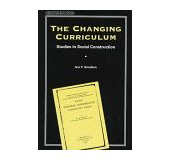The Changing Curriculum: studies in social construction
Chariots of Fire
Hamilton provides further evidence from Glasgow where the Oxford English Dictionary locates the earliest source of 'curriculum' in 1633. The annexation of the Latin term for a racecourse is clearly related to the emergence of sequencing in schooling' but the question 'Why Glasgow?' remains. Hamilton believes, that 'the sense of discipline or structural order that was absorbed into curriculum came not so much from classical sources as from the ideas of John Calvin (1509-1564)'.
As Calvin's followers gained political as well as theological ascendancy in late sixteenth century Switzerland, Scotland and Holland, the idea of discipline - 'the very essence of Calvinism' - began to denote the internal principles and external machinery of civil government and personal conduct. From this perspective there is a homologous relationship between curriculum and discipline: curriculum was to Calvinist educational practice as discipline was to Calvinist social practice (Hamilton and Gibbons 1986, p.14).
We have then an early instance, if these speculations carry weight, of the relationship between knowledge and control. This works at two levels with regard to curriculum definition. Firstly there is the social context in which knowledge is conceived of and produced. Secondly there is the manner in which such knowledge is 'translated' for use in particular educational milieu, in this case classes but later classrooms. The social context of curriculum construction must take account of both levels.
The evidence of Paris and Glasgow in the 16th and 17th centuries can be summarised as follows and makes a fairly clear statement of the interlinked nature of the emerging mode of curriculum and patterns of social organisation and control:
the notion of classes came into prominence with the rise of sequential programmes of study which, in turn, resonated with various Renaissance and Reformation sentiments of upward mobility. In Calvinist countries (such as Scotland) these views found their expression theologically in the doctrine of predestination (the belief that only a preordained minority could attain spiritual salvation) and, educationally, in the emergence of national but bipartite education systems where the 'elect' (i.e. predominantly those with the ability to pay) were offered the prospect of advanced schooling, while the remainder (predominantly the rural poor) were fitted to a more conservative curriculum (the appreciation of religious knowledge and secular virtue) (Hamilton 1980, p. 286).
This quote sets up the unique significance of curriculum as it developed. For soon after as its power to designate what should go on in the classroom was realised, a further power was discovered. Alongside the power to designate was the power to differentiate. This meant that even children who went to the same school could be given access to what amounted to different 'worlds' through the curriculum they were taught.
